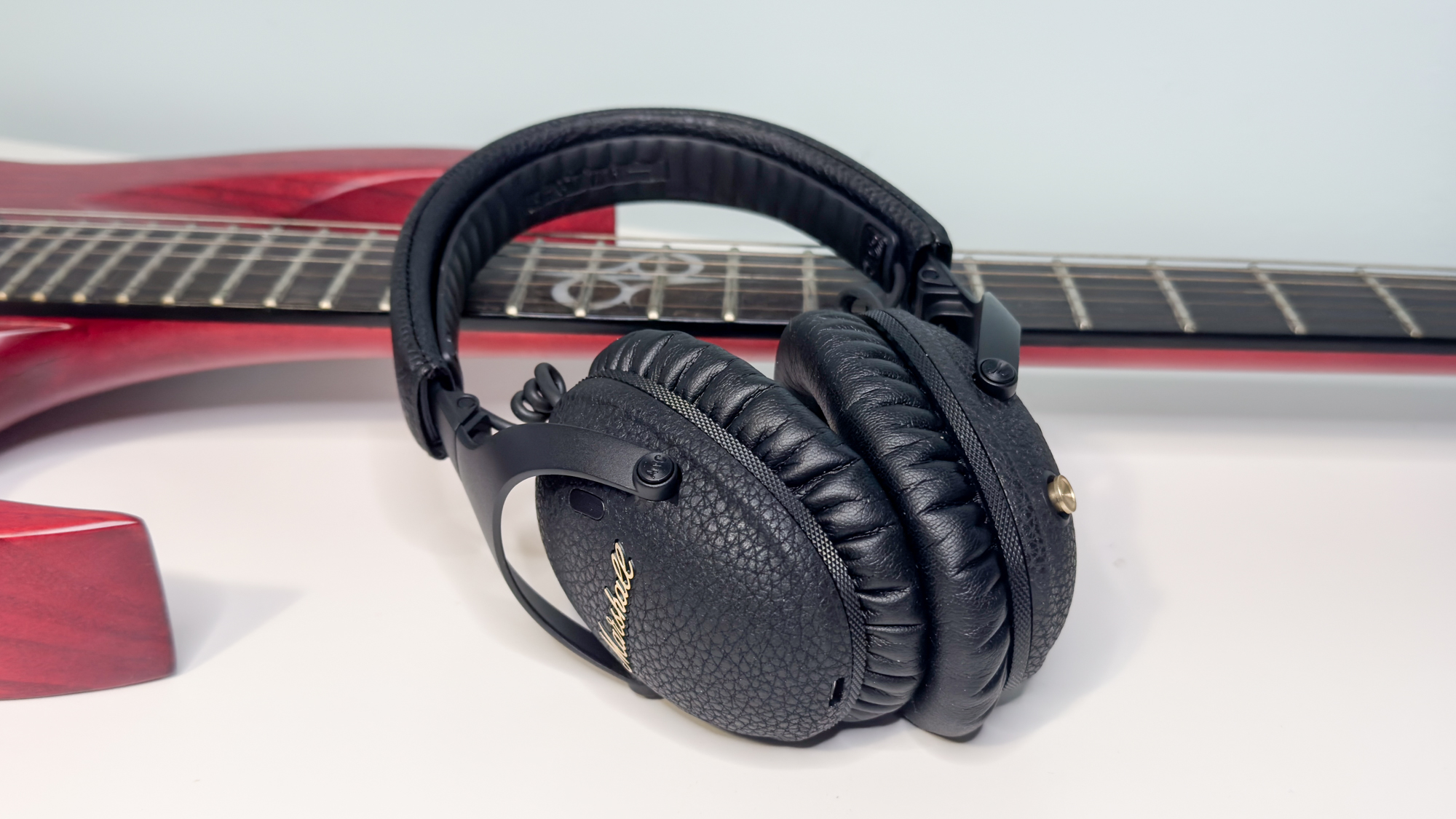
Marshall shouldn’t need any introduction. It makes the amps that go up to eleven (because 11 is more than 10, of course), tours around the world with The Who and The Sex Pistols, and has given the rock and roll world equipment to drool over since the sixties. Take a rockstar and look at some point in their history — there’s probably a Marshall stack attached to their guitar rig at some point.
With all of their amplification prowess, Marshall has also become a staple of the Bluetooth speaker and wireless headphone space, releasing some impressive audio gear that brings iconic design to some thoroughly modern tech specs.
In fact, in March 2023, the Swedish firm Zound Industries, the company that made the headphones and speakers, acquired Marshall Amps to become the Marshall Group. I’m told this allows for greater synergy between the two divisions, giving the home audio designers more to work with.
That means we now get audio gear more along the lines of the brand-new Marshall Monitor III, the companies top of the range noise canceling headphones. They’ve been developed more closely between the home audio team in Sweden and the amp guys in England — and it’s made for a very compelling headset indeed.
Marshall Monitor III review: Cheat sheet
- What is it? Marshall’s latest set of over-ear noise canceling headphones, bringing great sound and good noise canceling in addition to some extra features.
- Who is it for? Looking for a pair of noise canceling headphones? Ignore the rock n roll branding, these are for more than just the leather jacket wearing, crunchy guitar fans.
- What does it cost? $349/£299
- What do we like? The sound quality is excellent, and they are supremely comfortable.
- What don’t we like? There are some creaky areas around the headset, and the lovely coiled cable of the previous model is unfortunately missing this time around.
Marshall Monitor III review: Price and availability
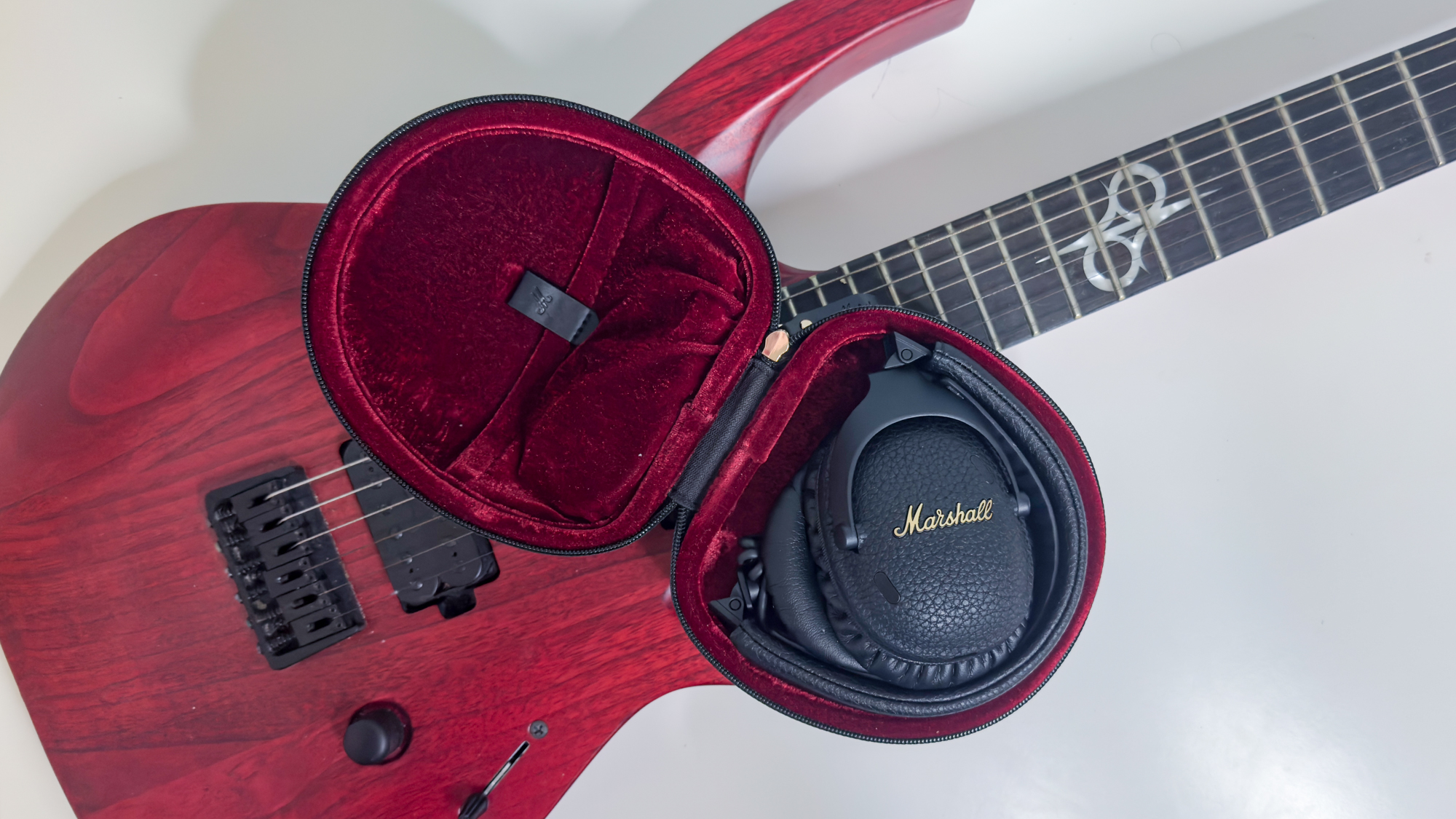
You can pick the Marshall Monitor III up from any good audio retailer, including Amazon and Crutchfield. Price-wise they’re a pretty solid mid-range buy (although slightly toward the top of the bracket), coming in at $349 in the U.S. and £299 in the UK. UK buyers are, uncommonly, getting a much better deal here, making them a very compelling option when stacked up against the competition in their home country.
The price sits them firmly below that which you’ll find from alternative brands that make up the best noise-canceling headphones. The ever-popular Sony WH-1000XM5, for example, usually set you back around $40 more, although you can occasionally find them for less. For the money, you’ll get slightly better noise canceling with the Sony option, but the sound profile of Marshall’s offering is more accomplished with a wider range of genres.
They masterfully undercut the more premium options as well, despite their feature set and top-notch sound quality. They are $150 less than the aluminum-bodied AirPods Max for example, and while Apple’s Spatial Audio presentation is going to be more effective, the Marshall's looks and sound more than make up for the dearth in price. Similarly, the noise canceling of the Bose QuietComfort Ultra headphones is going to be much better than the Monitor III’s, but the sound of the former will leave something to be desired the moment you strap the Marshall’s to your head — and the latter are $70 more at $429.
The Marshalls present an excellent value proposition — especially if you’re in the United Kingdom.
Marshall Monitor III review: Design and build
- Typically slick Marshall design
- Comfortable fit
- Slightly creaky build in places
I was chatting to a fellow member of the audio press at the launch event for the Marshall Monitor III, and we both agreed on one of Marshall's greatest aspects as a complete product line — the presentation. The tactile coating on the outside conjures images of stage-based amp and cab stacks, the Marshall logo sculpted from brass that sits proud of the surface of the device, and the clicky, satisfying buttons that make you feel like you’ve got a proper, quality item. They might not be the most popular pieces of audio gear that you’ll find on store shelves, but they are some of the most unique.
The Monitor III are no different. I love the way the headphones look, although given I liked the almost identical-looking Monitor II, that’s no great surprise. They’re smothered in that same rubberized coating that makes them feel like an old amp, and the logo on each earcup is a separate piece that feels distinct from the rest of the earpiece. An interesting fact I learned from the design team at the launch event — this is the first time they’ve got a gold logo on a pair of headphones, something the team was very proud of.
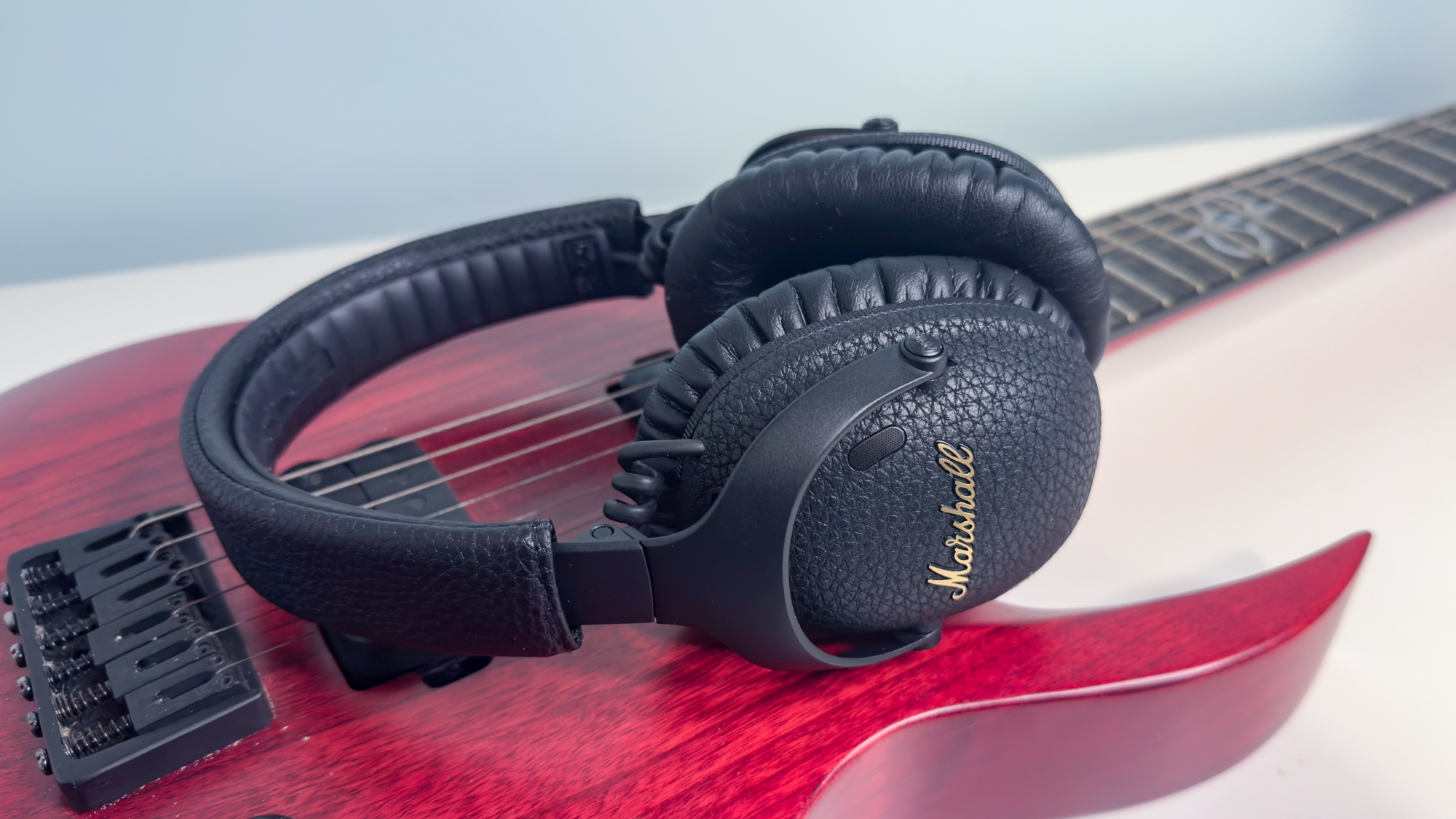
The headband is covered in a leatherette and features a silicon band underneath to relieve pressure on the top of your head. It works remarkably well, making the already very light headphones feel extremely comfortable over long periods of time. They manage to melt away to nothing over the course of the workday, leaving you with just your music/podcast/ASMR Vtuber (don’t worry, I won’t judge. Much).
The ear cushions help with the disappearing act that the headphones manage. The design team tells me they spent a lot of time massaging the proper formula of foam into the Monitor III, and it really shows when you slip them on your head. There are two layers of foam within the cushions: The first is a super soft layer, making initial contact with your head and creating a good seal for the noise canceling to work with. The second is a firmer foam wich makes sure your ears don’t make contact with the harder surfaces within each earcup and helps them keep their shape. The combination of the two, when they work with the headband, makes them supremely comfortable, moreso than the previous generation.
While the overall build is solid, with good-quality fabrics, plastics, and metal being used, there are a couple of areas to watch out for. There is a slight creak when the earcups are squeezed with even the lightest touch, although it doesn’t feel like they’ll crush beneath my distinctly not iron grasp.
Then there’s the folding mechanism. Ostensibly, it is good, letting you fold the headphones up with a simple twist into an imminently compact and portable form that fits wonderfully into their new (and equally compact) hard case, but the twisting mechanism presents a weirdness. When you wear them, and turn your head, the pivoting hinges in the headband also pitch around, and the headphones twist on your head. It doesn’t make them uncomfortable, or change the sound — but it does feel weird when you go to find the control dial and it’s 30 degrees south of where you were expecting to find it.
Marshall Monitor III review: Features
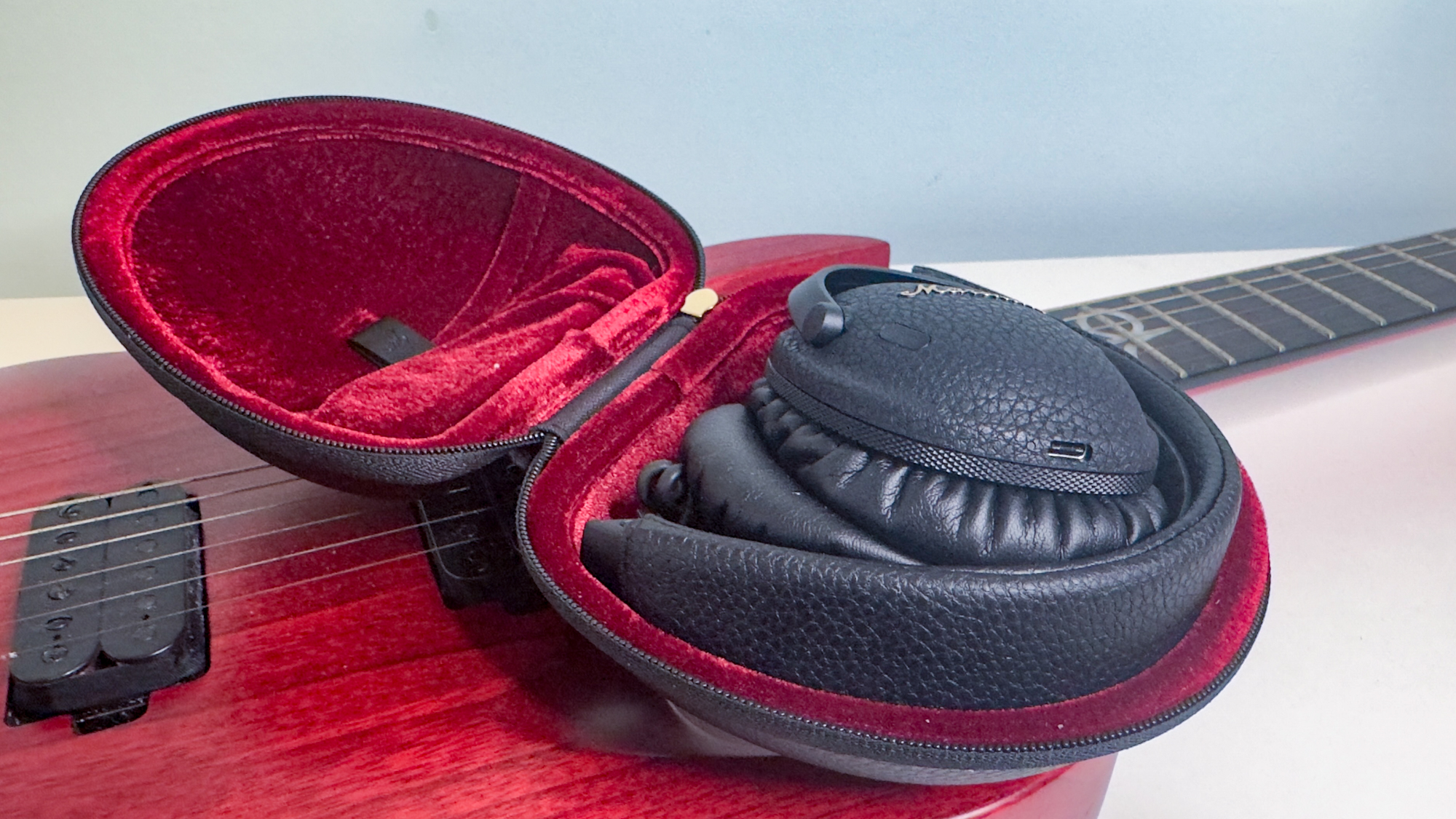
- Interesting but unimpressive take on Spatial Audio
- Very good app experience
- Ridiculous battery life
Marshall has packed some wicked features into the Monitor III, bringing them up to speed with the competition. First and foremost is the firm's take on Spatial Audio, which it’s called ‘Soundstage’. What’s worth noting here is that it doesn’t use the same kind of algorithms or mixes as the more traditional Spatial Audio Dolby Atmos standard, instead manipulating music from any source to sound wider, and more spacious.
It… works? Look, it’s not as impressive as a proper spatially mixed track that you’ll find on the likes of Apple Music, Tidal, or Amazon Music Unlimited, but it does a solid job of widening the soundstage of your normally mixed music. It’s a fun feature, activated through the Marshall app, and you can dial it in with a series of different digital dials to suit your audio needs. Being nitpicky, it can make some music sound synthetic and it does thin out some of the bass, but it’s a fun way to put yourself in the room with the musicians as they play their tunes. Don’t like it? Easy — turn it off.
The other headline feature is adaptive loudness, which uses the noise-canceling microphones to measure outside noise, and adjust the volume of your music accordingly so that “audio quality isn’t compromised”. It’s good, especially if you aren’t using any of the noise-canceling modes, and never gets to the point of being too loud. Or deafening you. Because that would be bad.
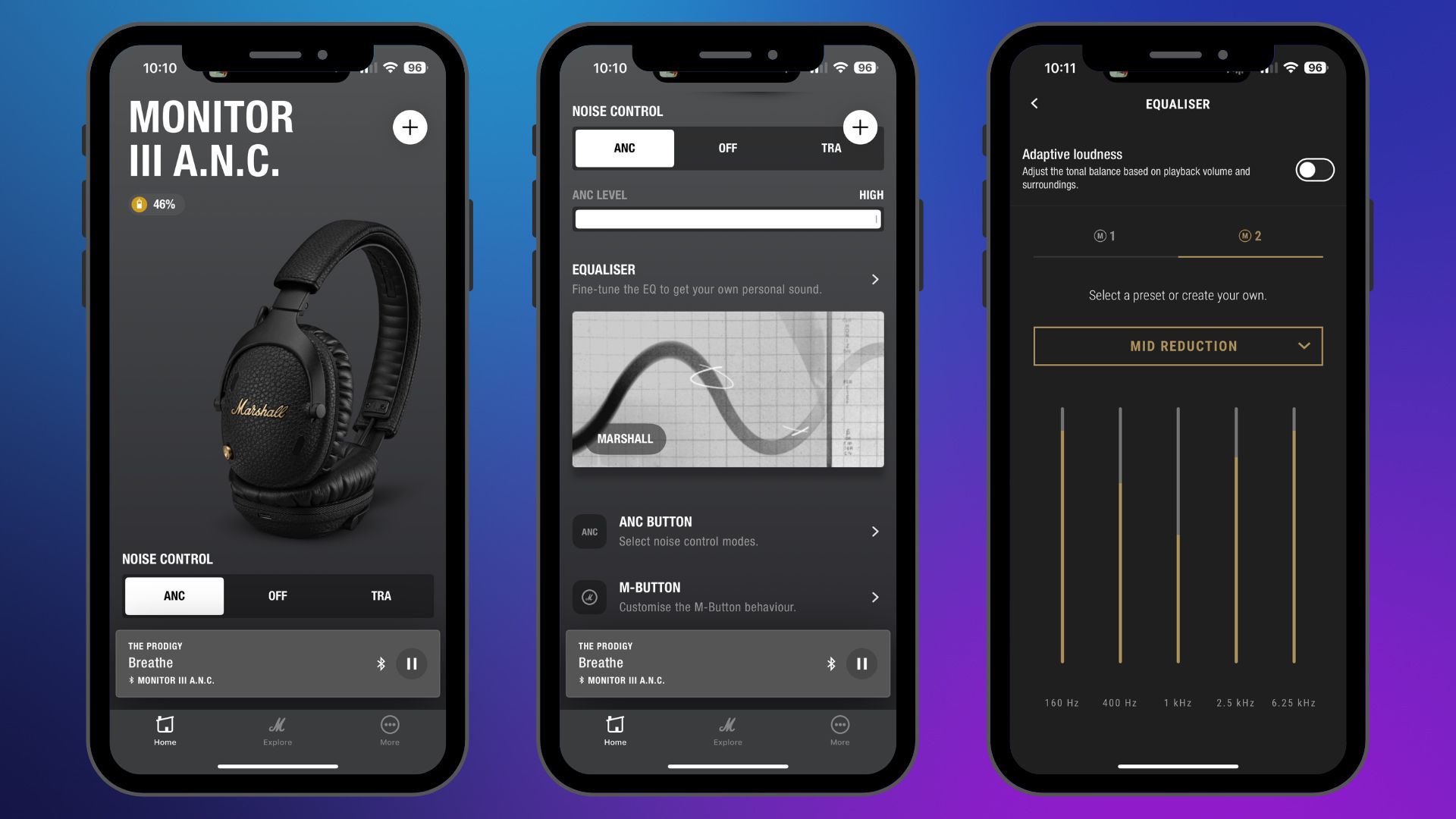
All of these features can be played with in Marshalls very solid app. There’s more in there as well, from the noise-canceling controls to a very useful and easy-to-use customizable EQ. That’s something that not every pair of headphones out there delivers, so it’s a great bonus to have — even if it is easy to take it for granted. There are the requisite presets available, and then the endlessly customizable set of sliders so that you can dial in the sound exactly as you want it. Not that you’ll really need to, however — as we’ll see later, the Marshall signature sound is excellent.
For Bluetooth nerds there’s Bluetooth LE on board as well, ready for when devices make use of the tech for improved battery life, better sound quality, and more. There’s not much out there that makes use of it yet, but it’s a great piece of future-proofing from Marshall.
Finally is the battery life, and my goodness, it’s epic. With noise canceling turned on, the Monitor III will last you a grand total of 70 hours. That’s over double the AirPods Max, nearly double the Sony WH-1000XM5, and 10 hours more with ANC than the current battery champions, the Cambridge Audio Melomania P100. Turn the noise canceling off, and you’ll get 100 hours. I’ve been thoroughly testing the Monitors for nearly a week at this point, and I’m still yet to need to charge them.
Marshall Monitor III review: Controls
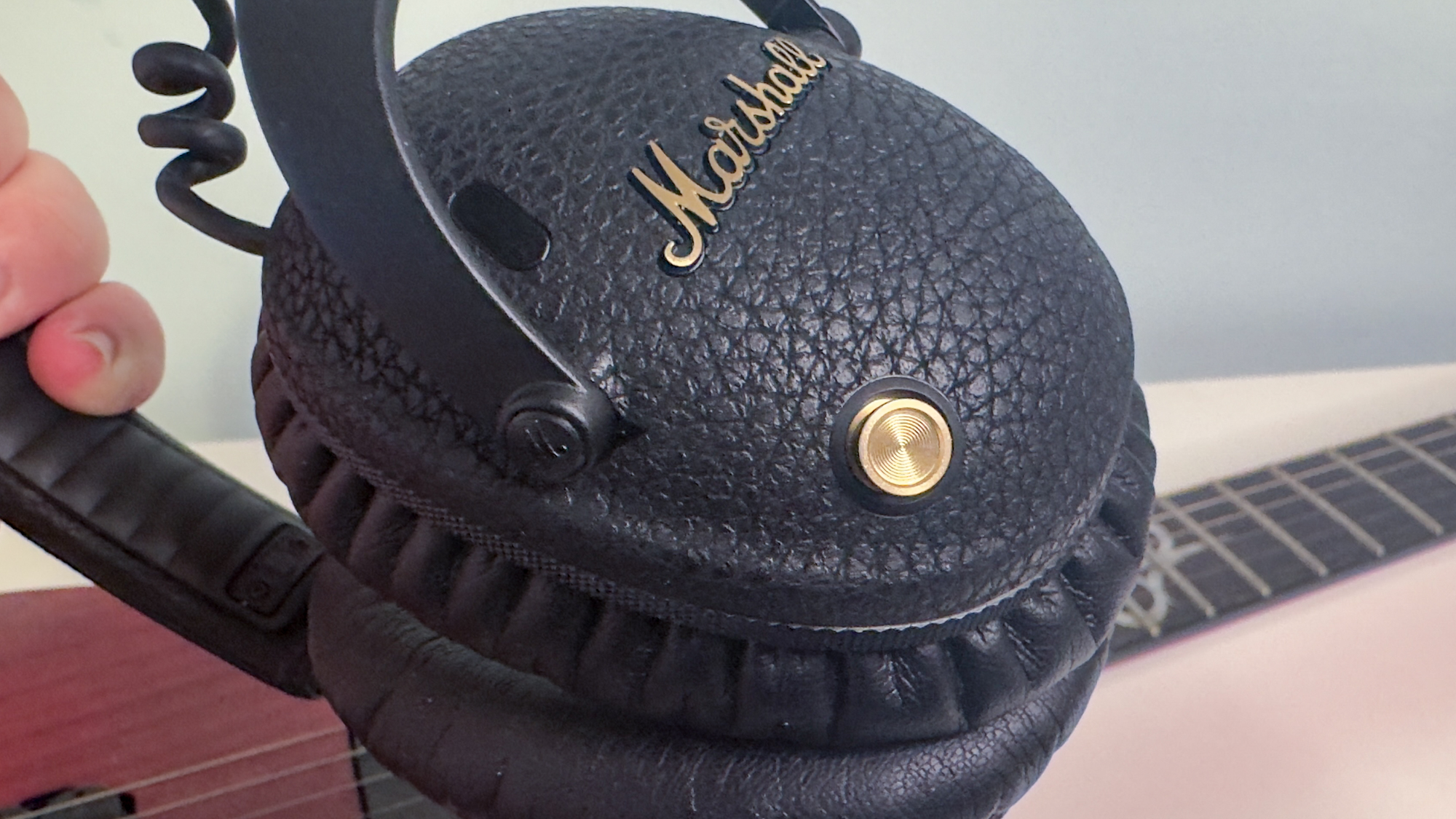
- Some of the best physical controls ever put on headphones
- Useful customizable button
Marshall’s control methods remain one of the best ways of interacting with a pair of headphones around, with a weird little bronze control nob on the right earcup. It’s the same on the Monitor III as it is with their other over-ear or on-ear headphones, and it works just as well
Click the funky little joystick down to play and pause your music, click it left and right to skip and go backward, and up and down to change the volume. The control itself is satisfyingly clicky and easy to find with your finger — and it raises a good point about headphone control. Touch controls are inaccurate, sometimes requiring multiple inputs to read properly, and, at worst, they get your intent wrong. When you’ve got a static button or joystick, you can learn where like a second nature. A physical control will always be more intuitive when you can’t see what you’re doing than a touch panel, and the Marshall ‘multi-directional control knob’ is the perfect example of why.
There are two more buttons on the headphones. On the right side of the headset, you’ll find the noise control button, which turns noise canceling on or off, and activates the transparency mode. You can choose the function as well — so it could only turn the ANC on or off, ignoring the transparency mode. Or, it could cycle between no ANC and transparency mode, or ANC on and transparency mode. This can all be changed in the app.
On the other side of the headphones, you’ll find the customizable ‘M’ button. There are a couple of different things you can do with the button, but the two most useful are the activation and deactivation of Soundstage, or one-touch Spotify. The Marshall engineers told me that a focus of development with the Monitor III was to make the number of steps between you and your music as few as possible — and one touch is the perfect example. Strap the headphones on, click the button, and music starts playing. It’s my chosen use for the M button, just so that I can get music playing before I go for a walk or sit down to start working.
Marshall Monitor III review: Sound Quality
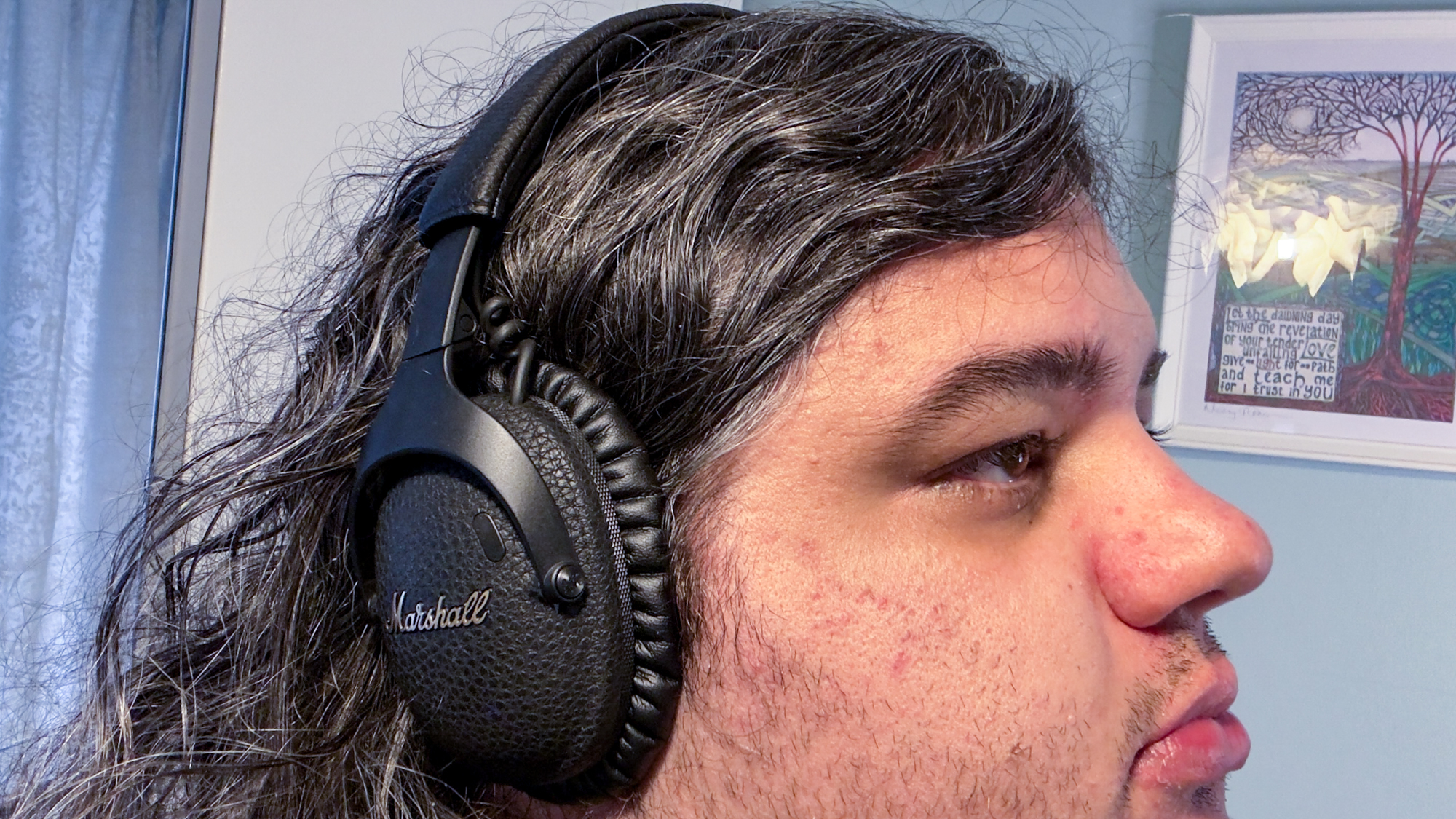
- Thick, chunky sound
- Decent soundstage even without Spatial Audio
- Great for heavier styles
Marshall is known for many things, but most people remember them for their distorted, crunchy guitar tones loved by the likes of Zak Wylde from Black Label Society and Slayer’s Kerry King. You might think, therefore, that the Marshall Monitor III are built from the ground up to excel at the heavier genres over anything else — but while there is some truth to this idea, it doesn’t tell the whole story.
While the Monitor III are indeed excellent for Rock and Metal, they’re also pretty good performers for Pop, R&B, Jazz, and even classical. My experience with them over my testing period has been a lot of fun — and while I’ll mostly leave the Soundstage feature turned off during my listening, I’ve found a very accomplished pair of headphones lie within their stylish exterior.
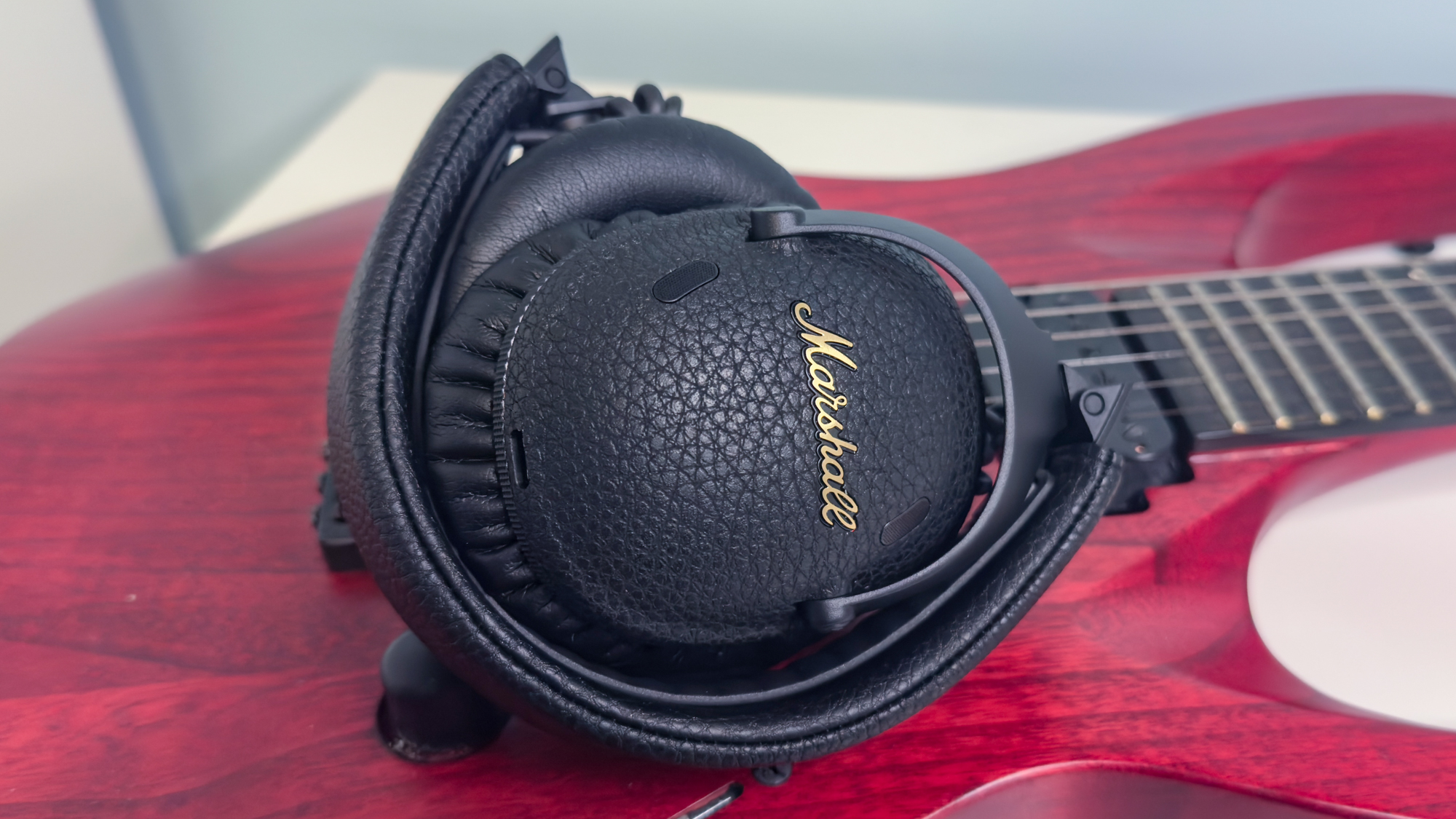
Starting with the kind of musical territory that Marshall would traditionally be more familiar with — Deathcore giants Ingested, with Numinous. Heavily distorted guitars are often a struggle for some headphones, as frequencies and noise get lumped together in a quagmire of metallic mess, but once the crisp, acoustic introduction is out of the way, the Monitor III pack a heavy punch of clear, warm distorted fury. There’s a whole load of low-end impact here, as the kick drum pummels and the bass guitar thickens that guitars for an astonishing display. The cymbals are spot on, accenting the drums well. There’s a restriction dynamically, however, with a relatively solid noise ceiling that makes everything roughly the same volume. Otherwise, an impeccable display of sonic destruction.
Bjork’s Joga gives the Monitors a chance to stretch their stereo soundstage, as the fluttering drum beats flit from ear to ear. It’s good! It’s not the widest you might experience — that goes to Apple’s AirPods Max, but it’s wide enough that it doesn’t feel restricted. Bass response and extension is again a highlight here, as the synth dances around Bjork's ethereal vocals. The violins in the mids are able to cut through the distorted synth noise with some precision — although again, there are some dynamic problems with sound layering and building. Overall, however, it’s a stellar performance of a tricky track to replicate.
Finally, Billy The Kid - II, Street in a Frontier Town from Aaron Copeland (in this case played in 1997 by the New York Philharmonic Orchestra) shows that there is some dynamic range to be found in the Monitor III, even if it is less than some of the competition. The flute line at the beginning is built on solidly by the piano and plucked strings, as the rest of the wind ensemble joins in. The highlight here is the soundstage, as each member of the orchestra is easily placed around the listener. It’s a very solid classical music performance, and one that you might not have expected from something that you would have thought focussed on Rock.
Marshall Monitor III review: Noise cancellation
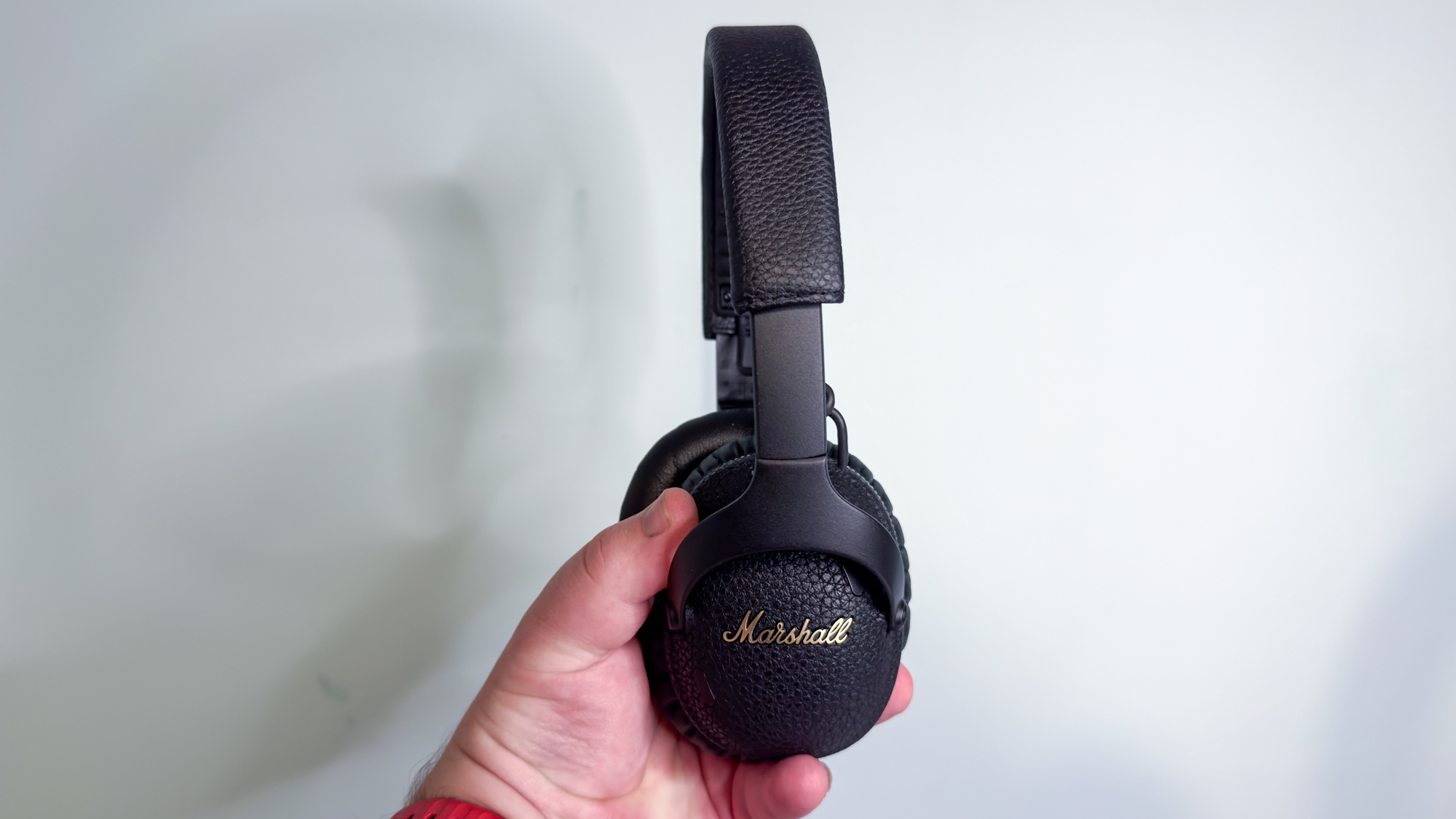
- Solid noise canceling
- Transparency mode not spectacular
The noise canceling found on the previous outing, the Monitor II was fine. It blocked out some noise, but it didn’t do a great job with some of the louder, more jarring sounds that you might encounter while out and about. I am happy to report that the noise canceling of the Monitor III is much better, and while it’s not as impressive as that which you’ll find on the alternatives from Sony or Bose, but it’s a solid performance that makes your environment more tolerable.
There’s a focus on blocking out lower-frequency noises, so stuff like passing trucks, noisy bus engines, and busy building sites disappear into almost nothing. Rushing tires almost break through, but when you’re listening to music, the cocooning effect is present and correct.
There’s a transparency mode present too, designed to let the outside world in so that you can buy a bus ticket or chat to the cashier when you’re going grocery shopping. It’s not the best transparency mode around, unfortunately, only letting in marginally more noise than if you were to turn the noise canceling modes off altogether. Considering the noise canceling is so good, it's a big shame that there’s not more to the transparency mode, especially taking into account how much noise is passively blocked thanks to the excellent seal around your ear. Hearing the outside world when you actually want to while wearing the monitor III is more difficult than other headsets, that’s for sure.
Marshall Monitor III review: Call quality and connectivity
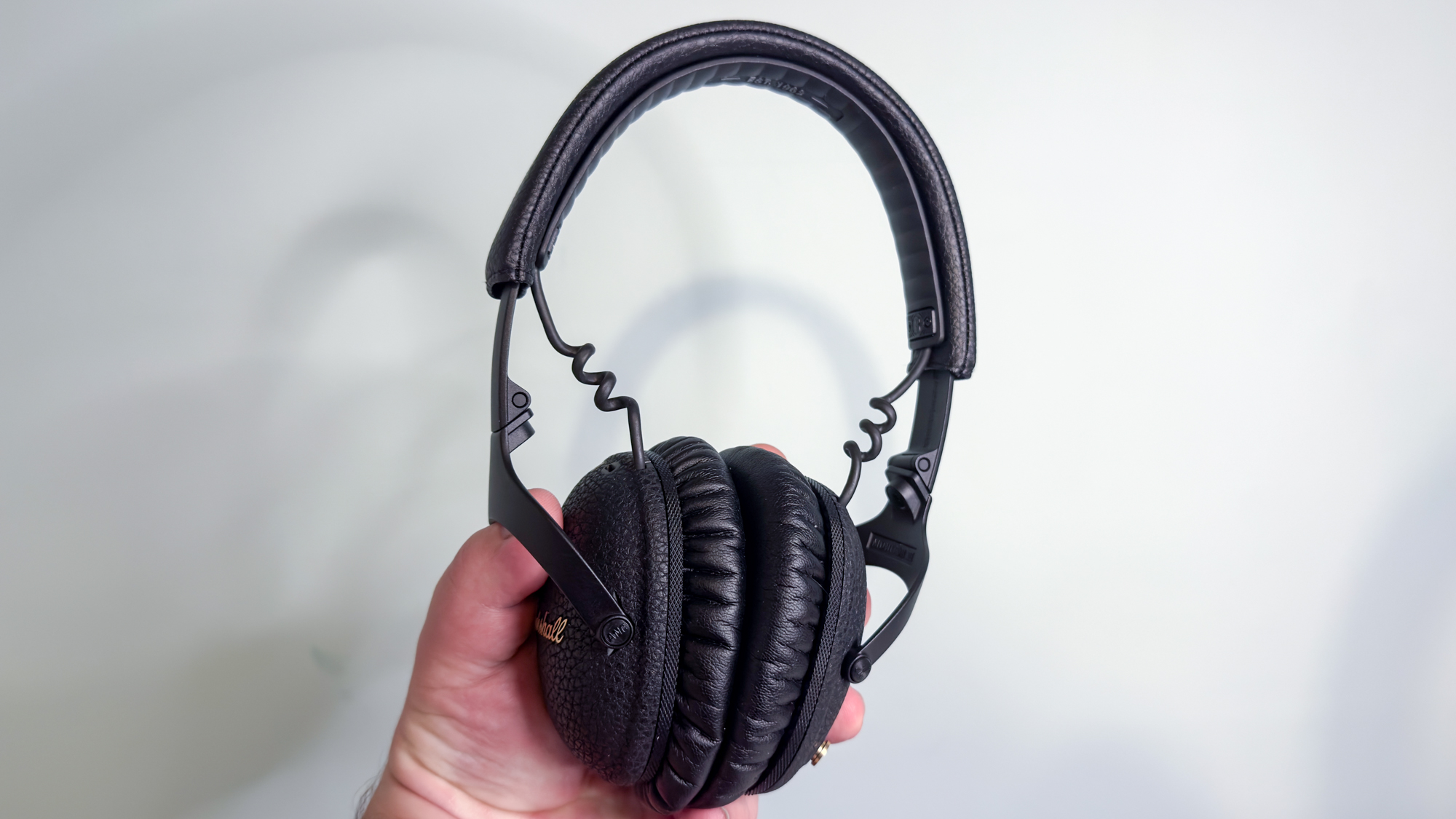
- Solid microphone
- Struggle in noise environments
- No more coiled cable
In a clear and quiet room, the call quality of the Monitor III is excellent. The microphone is clear and crisp, and the person on the other end of the call told me they could hear everything I was saying to them without issue. Introduce some extra noise, however, and things become trickier.
When traffic noise was introduced, hearing what I was saying became more difficult, and a busy office environment managed to render me too quiet for my recipient to hear me. There’s no noise isolation as you might expect from some of the other options on the market, alas, although if you find yourself a quiet corner to take your calls you’ll be fine.
Connectivity is now down solely through the USB-C charging port on the bottom of the left earcup, which also now doubles as your way to listen to music over a headphone jack. No more 3.5mm jack on the headphones themselves, a la Monitor II. Usefully, however, you don’t need them to be turned on to listen to music over a cable, which is a nice bonus.
Sadly, one of the most unique aspects of the Monitor II is missing — the lovely, coiled headphone cable is gone, replaced with a straight one so that it fits more easily into the carrying case. Boo.
Marshall Monitor III review: Verdict
I’ve come to really like the Monitor III during my testing. They’ve oodles more personality than the alternatives out there, creating themselves a characterful niche amongst the drier competition. The guitar sounds when you power them on or pair them to a device, the design attention to detail that harkens back to some very cool looking amplifiers, the gold Marshall logo that sets them apart from the tech-forward alternatives.
While the rest of the headphone world views noise-canceling wireless headphones increasingly as tech products, Marshall’s Monitor III remember that they should be audio products first and foremost — and it makes not for a perfect experience, but one that stands out. Excellent sound and brilliant comfort more than makeup for half-baked Spatial Audio and an unimpressive transparency mode in the long run, and if you’re looking for a great pair of ANC headphones, the Marshall should immediately be shortlisted.







